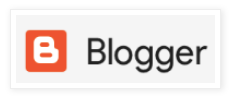Can they get the game rolling and become a leader against the other major giants?
We all know that Palo Alto took the world by storm and seems to be very well adopted and liked in the NET-SEC community. Forcepoint wants to be like a PaloNET, but they are far from it.
To become a leader, they need a wolve mentality. Nir Zuk & Ken Xie have that wolve mentality. These two great minded leaders/founders/creators in the information security arena, all having produce companies younger than Forcepoint ( stonesoft ) and made them into global leaders or powerhouses or basically a "rockstar".
With Forcepoint and the SMC and NGFW, you really love it ! or really hate it !
The product has a CHKPish like feel and interface and tries to replicate what CHKP does but they are way off the target. If you're a CHKP fw-admin you will see similarities from smart-dashboard, reporting, smart-logqry, smart-move, logExport, multi-domain, etc...
Sometimes I wonder if Forcepoint is the evil twin brother of CHKP when it comes to its own SMC & NGFW. Or they are in ongoing "Spy vs Spy" battle
Features that are common names in network-security are MIA or even current features provided are sub-par. It's funny that they ( forcepoint ) owns a well-known proxy { Websense } and NGFW integration to it's own WCG with WCCP is lacking. Yes, transparent proxy integration is missing between two Forcepoint own products.
Here's another example, SMC v6.7 just came out in the 1st week of November. DLP is a newly-supported feature. Yes, I know DLP has been around for decades. Integration into Forcepoint own icap-support servers has limitations
https://www.websense.com/content/support/library/ngfw/v67/relnote/ngfw_670_rn_smc_a_en-us.pdf
https://support.forcepoint.com/KBArticle?id=000017727
{Forcepoint DLP includes an ICAP server. However, this solution does not currently support X-Authenticated-User headers with the “Local” Auth-Scheme. For this reason, it is not possible to match users with the Forcepoint DLP policy when you use Forcepoint DLP with Forcepoint NGFW.}
So one product supports XAU and the other does not. You would think the Forcepoint Suite of items should be 100% compatible.
What can Forcepoint do to become a leader?
Based on my own personal observation, to become a wolve, you need to study the other wolves. Yes, Forcepoint needs to study the other major vendors, adopt and become a wolve like attitude.
One area they need better cohesion within the Forcepoint suite of products. They have every security offering from web, EDR, CASB, email,etc...but by far all of these solutions are autonomous & individualistic when viewed by the NGFW.
In closing, I look at Forcepoint vs the "other" vendors the same way like that of "Coke and Pepsi".
Each thinks they are the best, but taking Coca-Cola, I never have seen a Pepsi delivery truck in most other countries outside of the Americas, but I can guarantee you will always see a big Red coke truck or billboard before you will see a Pepsi logo. Even tho the financials of Pepsi has bigger revenue and shares. I'm pretty sure the world sees Coke as the leader and as a better product also.
Again, you either love or hate it. Btw, I drink Coke .
NSE ( network security expert) and Route/Switching Engineer
kfelix -----a----t---- socpuppets ---dot---com
^ ^
=( @ @ )=
o
/ \















